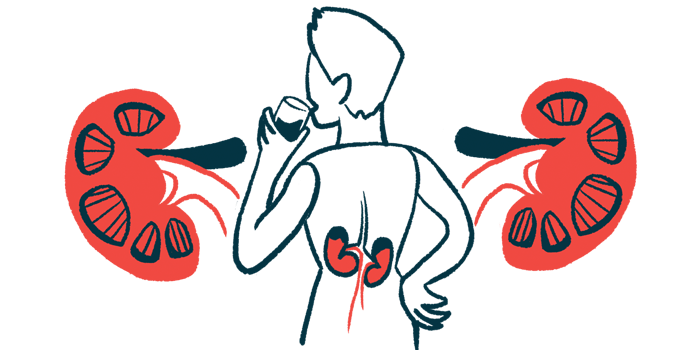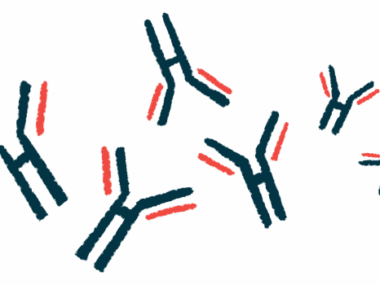Neutrophils a possible therapeutic target for AAV, kidney diseases
Driver of kidney damage could play role in more effective treatments: Study
Written by |

Immune neutrophils and the weblike structures they release to trap and kill microbes — called neutrophil extracellular traps, or NETs — are key players in driving kidney damage in ANCA-associated vasculitis (AAV) and other diseases, a review study found.
This points to neutrophils and NETs as potential targets for more effective and safer treatments for these conditions, according to the researchers.
“The exciting part is that by going after the specific pathways that cause NETs and tissue damage, we might be able to give patients better treatment with fewer side effects,” Daigo Nakazawa, MD, PhD, of the department of rheumatology, endocrinology, and nephrology at Hokkaido University in Japan, said in a university press release. Nakazawa served as the study’s first author.
“We’re hopeful that as more clinical trials move forward, therapies that target neutrophils will help slow or even stop the progression of kidney disease,” Nakazawa said.
The review study, “Neutrophils and NETs in kidney disease,” was published in Nature Reviews Nephrology.
Neutrophils appear to go from protector to threat
Neutrophils are a diverse and abundant class of immune cells that serve as first responders when the body is faced with injury or infection. Their activities, including the release of NETs, “are essential for eliminating [disease-causing] microorganisms and are involved in subsequent tissue repair,” the researchers wrote.
However, the team noted, “NETs can also exert harmful effects, such as self-injury, induction of thrombosis, and promotion of autoimmunity, especially when NET generation and degradation are not regulated.” Thrombosis refers to the formation of blood clots that block blood flow.
The delicate blood vessels and other structures in the kidneys are particularly vulnerable to unresolved, sustained inflammation that can result in tissue damage, per the researchers.
“Neutrophils are usually there to protect us, but in these diseases, they seem to be part of what is causing the problem,” said Akihiro Ishizu, MD, PhD, the study’s senior author and a professor at Hokkaido.
In their review, the team discussed the role of neutrophils and NETs in a range of kidney diseases.
One such disease is AAV, an autoimmune condition in which self-reactive antibodies called ANCAs drive inflammation and damage to small blood vessels. The disease frequently leads to glomerulonephritis, or inflammation of the waste-filtering units of the kidneys (glomeruli), which can eventually bring about kidney failure.
The ANCAs that characterize AAV wrongly target one of two enzymes present in neutrophils and NETs, per the researchers, resulting in the cells’ overactivation and an increase in NET production.
NETs are thought to drive autoimmunity by revealing these targets to the immune system, triggering a constant loop of inflammation and damage in small blood vessels. Animal studies have established a cause-and-effect relationship between these NETs and the development of glomerulonephritis.
Damage due to neutrophils make them a therapeutic target, per team
The usual mechanisms that regulate NETs are also altered in AAV, according to the researchers. Signals that normally block NET formation are reduced, and the NETs that form are resistant to the enzymes that should degrade them.
The team noted that the persistence of NETs, combined with inflammatory signals, increases the exposure of ANCA targets, further promoting the production of these self-reactive antibodies.
“This effect creates a vicious cycle whereby ANCA induce NETs, which, in turn, promote further ANCA production, with a central role in the [development] of AAV,” the scientists wrote.
The researchers also discussed other diseases where NETs are thought to play a role, including acute kidney injury, lupus, and thrombotic microangiopathy.
“We’ve known for years that inflammation is an important part of kidney disease, but what we’re now seeing is that neutrophils and NETs are more than just passive participants,” Ishizu said. “They are actively making the damage worse, and this gives us new ways to think about treatment.”
Given the increasingly recognized importance of neutrophils in kidney diseases, there’s an interest in developing therapeutic agents to target them. Such treatments, the researchers noted, could be advantageous over existing medications that cause broad immunosuppression and can leave people vulnerable to serious infections.
We’ve known for years that inflammation is an important part of kidney disease, but what we’re now seeing is that neutrophils and NETs are more than just passive participants. They are actively making the damage worse, and this gives us new ways to think about treatment.
A possible approach is to target factors that contribute to neutrophil activation. Tavneos (avacopan) is an oral therapy that blocks a molecule called C5a, which is involved in neutrophil activation and AAV-related inflammation. It is approved as an add-on to standard treatment for certain adults with AAV.
Another strategy of interest is to stop NETs from forming in the first place by blocking neutrophil proteins that are involved in building them. Other efforts are looking at ways to help the body clear away NETs more efficiently.
A variety of such strategies have been tested in preclinical models of AAV, but haven’t yet made their way to the clinic.
“Targeting neutrophils is considered a promising therapeutic strategy for various neutrophil-mediated inflammatory disorders,” the researchers wrote. “International collaborative clinical studies are expected to demonstrate the real-world efficacy of neutrophil-targeting therapies in improving kidney-disease outcomes.”







